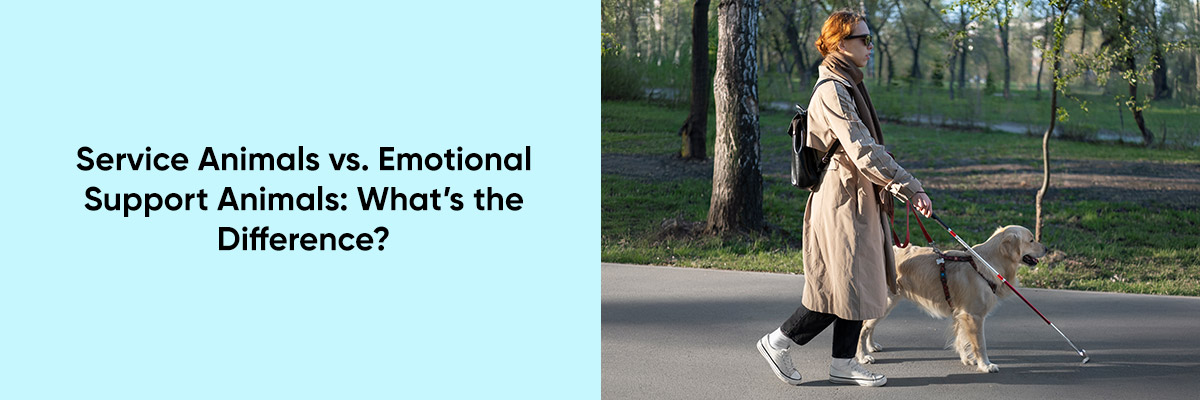In recent years, there has been growing awareness and recognition of the important roles that animals can play in supporting individuals with various disabilities and emotional needs. Two terms that are often used in this context are “service animals” and “emotional support animals” (ESAs).
While both types of animals provide invaluable assistance to their handlers, they serve different purposes and are afforded different legal rights. Understanding the distinction between service animals and emotional support animals is crucial for both individuals who may benefit from their companionship and the general public.



What is a Service Animal?
A service animal is a dog that is specifically trained to perform tasks for an individual with a disability. The Americans with Disabilities Act (ADA) defines a service animal as a dog that has been individually trained to do work or perform tasks for a person with a disability. The tasks performed by the animal must be directly related to the person’s disability.
Examples of Service Animal Tasks
- Guiding the Blind: Guide dogs help individuals who are blind or visually impaired navigate their environment safely.
- Alerting the Deaf: Hearing dogs alert individuals who are deaf or hard of hearing to important sounds, such as doorbells, alarms, or approaching vehicles.
- Medical Alert: Service dogs can be trained to detect and respond to medical conditions such as seizures or changes in blood sugar levels for individuals with epilepsy or diabetes.
- Mobility Assistance: Some service dogs assist individuals with mobility impairments by retrieving items, opening doors, or providing stability.
- Psychiatric Support: Service dogs can assist individuals with psychiatric disabilities by performing tasks such as interrupting self-harm behaviors or reminding the handler to take medication.
What is an Emotional Support Animal?
An emotional support animal (ESA) provides comfort and support to individuals with emotional or psychological conditions. Unlike service animals, ESAs are not required to undergo specialized training to perform specific tasks. Their primary role is to provide emotional support through companionship, which can help alleviate symptoms of mental health conditions such as anxiety, depression, or PTSD.
Key Differences Between Service Animals and Emotional Support Animals
Training:
- Service Animals: Must be specifically trained to perform tasks directly related to the handler’s disability.
- Emotional Support Animals: Do not require special training beyond typical pet behavior.
Legal Protections:
- Service Animals: Are granted broad access rights under the ADA. They are allowed in most public places, including restaurants, stores, and public transportation, as long as they are under control and do not pose a threat.
- Emotional Support Animals: Do not have the same level of access rights. While they may be allowed in housing under the Fair Housing Act and on certain flights under the Air Carrier Access Act (with appropriate documentation), they are not guaranteed access to other public places.
Certification and Documentation:
- Service Animals: There is no official certification required, but handlers may carry identification cards or wear vests for their animals as a courtesy. Public establishments may only ask if the animal is a service animal required due to a disability and what task the animal is trained to perform.
- Emotional Support Animals: Owners may need a letter from a licensed mental health professional to certify that the animal provides emotional support that alleviates one or more identified symptoms of a disability.
Conclusion
Service animals and emotional support animals play vital roles in the lives of individuals with disabilities and emotional conditions. While both provide support, the key differences in their training, legal rights, and the roles they play are crucial to understand. Service animals are highly trained to perform specific tasks for individuals with disabilities and are protected under the ADA, granting them access to most public spaces. Emotional support animals, on the other hand, provide comfort through companionship and have more limited legal protections.
As society continues to recognize the importance of these animals, it is essential to respect their roles and the laws that govern their use. Whether you are an individual who may benefit from a support animal or someone who encounters them in public, understanding these distinctions fosters a more supportive and inclusive environment for everyone.


